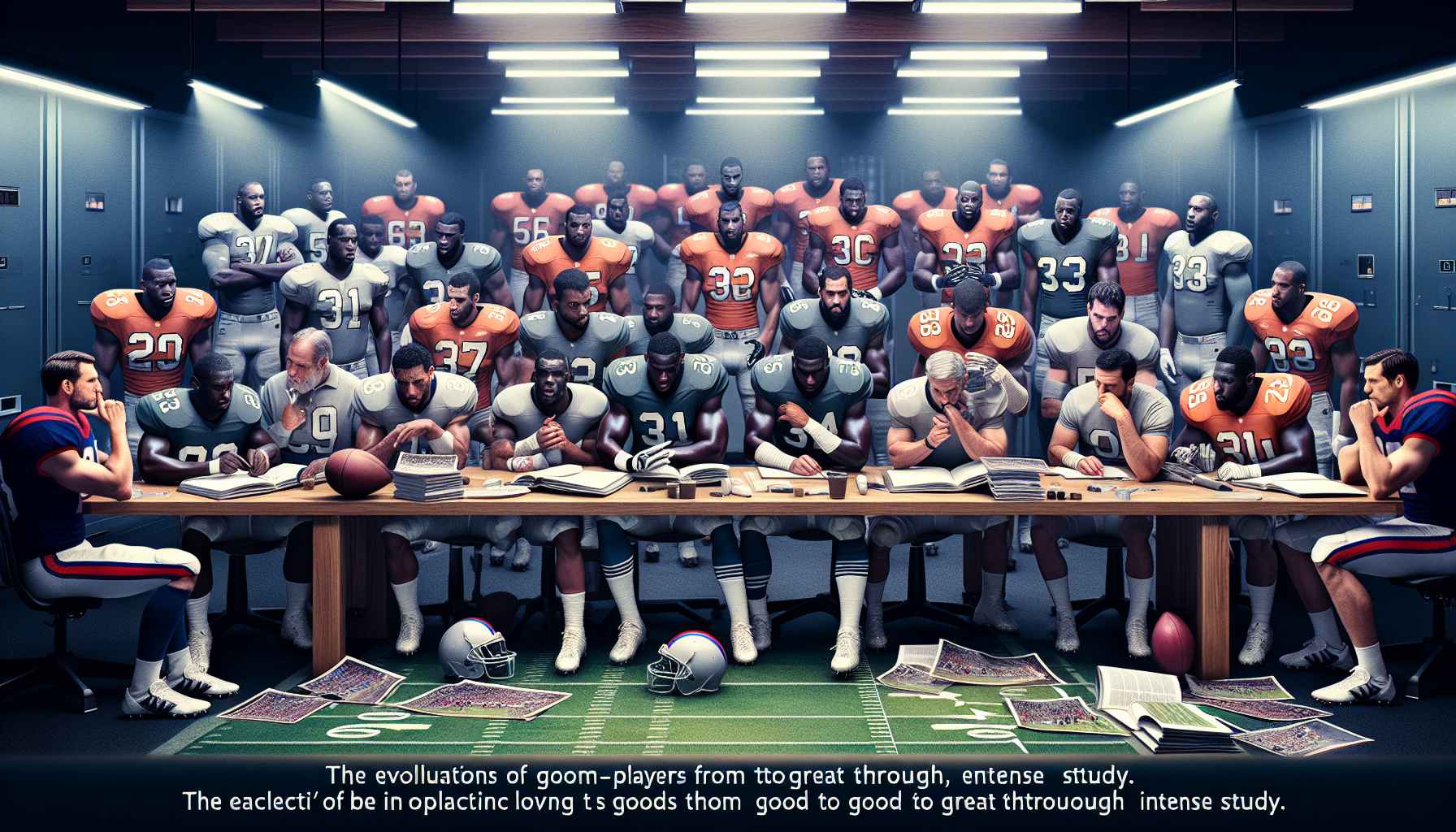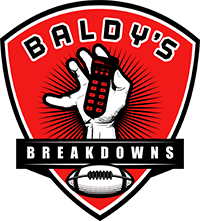
In the intense crucible of the NFL, where milliseconds separate victory from defeat, the subtle art of film study emerges as a game-changer. This isn’t just about watching replays—it’s about decoding the calculus of every movement, every decision, every opportunity seized or missed. For players striving to elevate their game from good to legendary, film study becomes a sanctuary of knowledge and a forge of transformation. Let’s dive deep into the unheralded practice that molds champions and shapes the trajectory of careers, capturing the essence of dedication and the pursuit of greatness.
The Transformative Power of Film Study
In the world of the NFL, where success hinges on minute details and finite adjustments, film study offers unparalleled opportunities for players and coaches alike. It is the silent tutor, dissecting every play with surgical precision, revealing strengths, exposing weaknesses, and elucidating patterns only discernible under meticulous scrutiny.
Understanding Defensive Formations
For offensive players, understanding defensive formations is paramount. A quarterback watching film isn’t just looking at tackles and touchdowns; he’s identifying coverages, assessing blitz packages, and noting how different defenses react to distinct offensive sets. This foresight empowers him to change plays at the line of scrimmage, exploit vulnerabilities, and maximize the team’s chances of success.
Consider the legendary Peyton Manning, whose unparalleled film study regimen allowed him to forecast defenses and audibly change the course of games in mere seconds. Manning’s deep engagements with film presented him as a beacon of football intellect, turning the cerebral exercise of studying film into an art form.
The Science of Breaking Down Plays
Beyond the glitz of game day lies the methodical, almost scientific process of breaking down plays. The essence of this approach is to strip each play to its fundamental components, analyzing movements down to the twitch of a muscle or the flick of the wrist.
Coaches and players relentlessly rewatch sequences to discern where a play succeeded or fell short. This process isn’t confined to just individual performance. Teams scrutinize every aspect—from the synchronization of offensive linemen to the defensive backs’ ability to shadow receivers. They thrive on these granular insights to fine-tune their strategies.
Leveraging Film Study for Defensive Mastery
Defensive players, too, rely heavily on the insights gained from film study. A linebacker examining footage observes the tendencies of running backs and offensive linemen. This forward-planning sharpens his ability to anticipate plays, read shifts in blocking schemes, and improve his positioning to make impactful stops.
Given their commitment to perfection, star defenders like Ray Lewis and Ed Reed turned film rooms into arenas of discovery, delving into opponents’ habits and exploiting them with surgical efficacy. Reed, known for his anticipatory interceptions, saw film study as a tool of enlightenment, making him a feared and revered opponent.
Adaptability: The Gift of Film Analysis
In a sport where adaptability signifies survival, film study becomes indispensable. When facing a diverse range of offensive or defensive strategies week after week, memorizing your opponents’ habits through film allows a player to quickly adjust during live play. Defensive ends like J.J. Watt benefit greatly from film analysis, adjusting their rush techniques against various offensive line formations and adapting their approach with each snap.
The same principles apply when playing teams with unfamiliar systems, or when mid-season reinvention of strategies is needed. Being adaptable means a commitment to unending preparation, viewing film as both a map and a compass guiding every move.
Coaches: The Visionaries Behind the Screens
Behind every successful athlete, there is often an unsung hero armed with a clicker and a projector. Coaches use film to execute broad strategies that align with their team’s strengths and simultaneously counteract an opponent’s advantages. Stay updated on tactical insights at Baldy’s Facebook Page.
By delving into hours of footage, coaches plant the seeds of game-winning plans. They take pride in grounding players in the realities of their performance, making film study more than just an activity—it’s an ingrained discipline that shapes the mindset of the entire team.
From Insights to Execution on Game Day
Translating insights from film room to field is a delicate balance of preparation and execution. Visual learners might recall specific clips during play, while those relying on muscle memory work on perfecting repetitive actions witnessed during study.
One high-performing player who exemplifies this harmonious execution is Russell Wilson. His appreciation for the intricate details identified in game footage allows him to navigate high-pressure situations with a sense of calm and foresight that parallels seasoned mentors instead of youthful sportsmen.
Resources like Baldy’s X Page provide diverse perspectives around game film, enriching the interpretation and understanding of various components that formulate the gameplay strategies.
Concluding Thoughts
The inherent value of film study extends beyond its technical merits. It fuels emotional and psychological preparation. Strap on any Super Bowl MVP’s helmet and there’s a good chance they could attribute their success, at least partially, to the film studied prior to wielding their prowess on game day.
Ultimately, film study transforms the game into a dynamic experience—a compendium of strategic calculations, intellectual agility, and prudent foresight. It accentuates how the most subtle tweaks, often unnoticed by casual viewers, serve as the pivotal catalysts distinguishing between the ceremony of a well-fought victory and the despair of an unexpected loss.
Stay enriched with in-depth analysis and more at Baldy’s YouTube Channel and continue exploring the indomitable spirit of the NFL through the lens of the understated, yet vastly influential world of film study.
